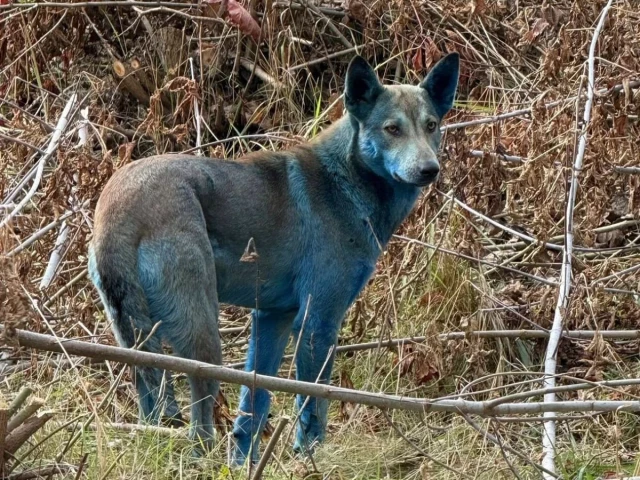Blue dogs spotted in Chernobyl spark investigation into unusual coloration
Researchers are looking into recent sightings of unusually colored dogs in the Chernobyl Exclusion Zone

A pack of stray dogs with striking blue fur has been photographed wandering the Chernobyl Exclusion Zone, setting off waves of online speculation about possible radioactive mutations.
But according to experts working in the area, the explanation is far more ordinary, and a bit unpleasant.
Researchers with the Dogs of Chernobyl initiative confirmed to IFLScience that at least three blue-tinted dogs were documented inside the exclusion zone on October 6, 2025. The photos, shared by the Clean Futures Fund, quickly went viral.
After several failed attempts to catch the dogs, the team discovered a likely source of the odd coloration: a leaking portable toilet.
“They appear to have been rolling in a substance that had accumulated on their fur. We suspect it came from an old portable toilet near where the dogs were found,” said Dr. Jennifer Betz, veterinary medical director for the Dogs of Chernobyl program. “We are not in any way saying that it is related to radiation.”
In other words, the vivid blue hue probably came from a chemical dye used in sanitation fluid, not nuclear exposure. The researchers believe the incident poses little health risk, provided the animals don’t ingest much of the substance.
“The dogs appear healthy, as do the other dogs we’ve encountered in Chernobyl,” Dr. Betz added.
This isn’t the first time color-coated canines have surfaced in the region. In 2021, residents of Dzerzhinsk, Russia, reported a pack of bright blue dogs near an abandoned chemical plant, likely stained by copper sulfate, a bluish compound used in industrial manufacturing.
The latest sighting has reignited interest in the resilient population of animals that continue to roam Chernobyl nearly four decades after the 1986 nuclear disaster.
The Dogs of Chernobyl program, run by the Clean Futures Fund, has sterilized more than 1,000 dogs and cats since 2017 as part of efforts to monitor and humanely manage the population.
While their unusual fur may look alarming, scientists say the “blue dogs of Chernobyl” are more a story of human waste than radioactive mutation, another strange chapter in a landscape where nature, against all odds, continues to adapt.


















COMMENTS
Comments are moderated and generally will be posted if they are on-topic and not abusive.
For more information, please see our Comments FAQ